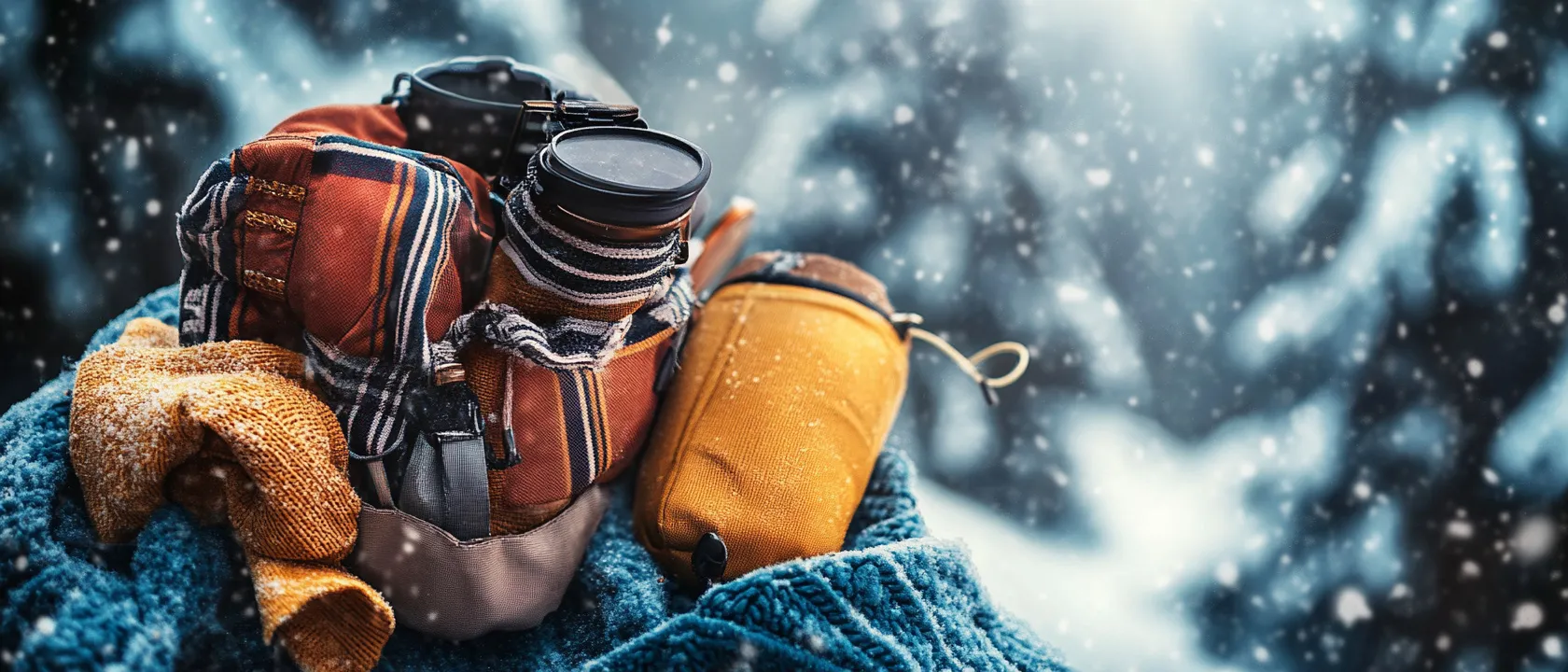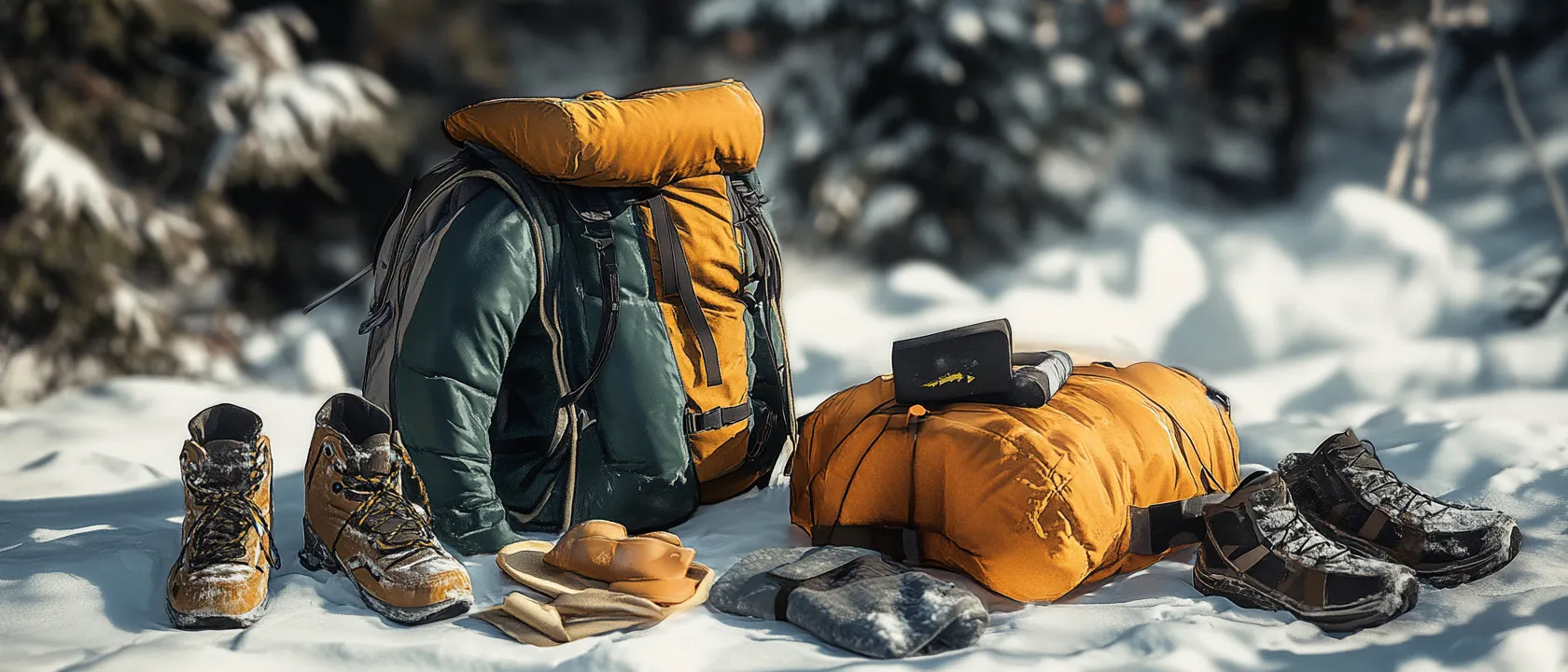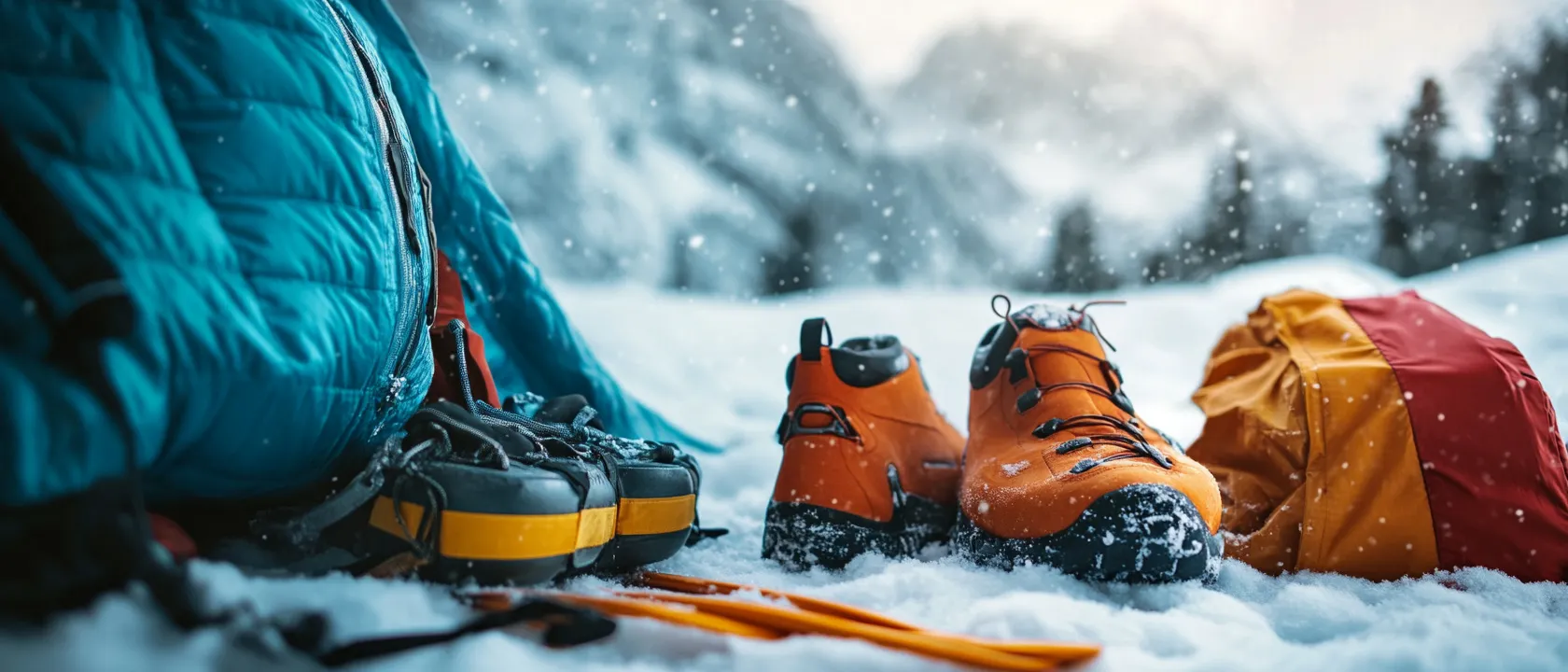The unforgiving nature of winter environments creates perhaps the most demanding conditions for outdoor equipment, where gear failure transcends mere inconvenience to potentially life-threatening scenarios with minimal margin for error. Unlike three-season camping where moderate temperatures forgive equipment shortcomings, winter conditions ruthlessly expose design flaws, material limitations, and performance exaggerations through immediate and sometimes dangerous feedback. As manufacturers across diverse price points make increasingly ambitious claims regarding temperature ratings, weather resistance, and cold-weather functionality, a fundamental question emerges for winter adventurers making critical equipment decisions: which winter camping brands and products genuinely deliver reliable performance through sophisticated material science, thoughtful design implementation, and thorough cold-weather testing that ensures safety and comfort in genuinely harsh conditions, rather than merely offering impressive specifications or attractive aesthetics that fail when confronted with the uncompromising realities of sub-freezing temperatures, moisture management challenges, and the potentially serious consequences of equipment inadequacy in remote winter environments?
To provide definitive answers beyond marketing claims, this analysis examines the actual performance capabilities of leading winter camping equipment across essential categories. Through systematic evaluation of thermal efficiency, moisture management, durability under harsh conditions, and functional design for winter-specific challenges, this comprehensive assessment reveals which brands truly deliver reliable cold-weather performance—providing essential guidance for winter adventurers seeking genuine capability rather than merely impressive specifications.

Understanding Winter Performance: Beyond Temperature Ratings
Before examining specific brands and products, understanding the fundamental principles governing effective winter gear provides essential context for evaluating manufacturer claims and design approaches.
The Winter Performance Matrix
Effective winter equipment addresses multiple performance dimensions simultaneously:
Thermal Efficiency Factors determining heat retention:
- Insulation effectiveness maintaining temperature differential
- Wind resistance capabilities preventing convective heat loss
- Thermal bridging mitigation eliminating cold spots
- Heat reflection properties returning radiant body heat
- Duration of performance maintaining warmth over extended periods
Moisture Management Elements affecting comfort and safety:
- External moisture exclusion preventing precipitation entry
- Vapor transmission efficiency allowing perspiration escape
- Condensation control preventing internal moisture accumulation
- Wet-performance characteristics maintaining function when damp
- Drying efficiency recovering from moisture exposure
Cold-Specific Functionality addressing winter conditions:
- Operation with gloved hands through intentional design
- Freeze resistance in mechanisms ensuring continued function
- Snow-shedding capabilities preventing accumulation and melt
- Compatibility with layering systems accommodating winter clothing
- Low-temperature material performance preventing brittleness or failure
Durability Under Harsh Conditions ensuring reliability:
- Material performance at temperature extremes maintaining integrity
- Abrasion resistance against ice and snow preventing damage
- Connection point strength when cold-compromised
- UV degradation resistance despite intensified winter exposure
- Repeated freeze-thaw cycle endurance preventing deterioration
These interrelated performance factors explain why effective winter equipment requires sophisticated design approaches addressing multiple challenges simultaneously rather than simply adding insulation or waterproofing to three-season designs—a reality often obscured by marketing focusing on isolated specifications rather than integrated performance.
Common Misconceptions in Winter Gear Evaluation
Several persistent myths often distort winter equipment assessment:
Temperature Rating Reliability:
The absence of standardized testing for sleeping bag temperature ratings (excluding the European EN/ISO standards adopted by some manufacturers) creates significant inconsistency, with some brands providing conservative ratings reflecting true comfort thresholds while others offer aspirational ratings possible only under ideal conditions unlikely in field use.
R-Value Interpretation:
The focus on sleeping pad R-values without considering the substantial variance in individual metabolism, sleep systems, and ground conditions leads many to select marginally adequate insulation based on laboratory measurements that poorly predict real-world comfort in variable field conditions.
Waterproof/Breathable Equilibrium:
The persistent myth that highly waterproof materials can simultaneously offer equivalent breathability ignores the fundamental inverse relationship between water entry resistance and vapor transmission, leading many to select excessively waterproof materials that create internal condensation issues more problematic than the external moisture they exclude.
Weight-Centric Evaluation:
The three-season backpacking emphasis on weight minimization often inappropriately transfers to winter gear selection, where durability, reliability, and functional margin are substantially more important than saving ounces on critical safety equipment operating with minimal room for failure.
Brand Consistency Assumption:
The assumption that brands maintaining excellent performance in certain categories necessarily excel across their entire product range ignores the reality of specialized expertise, with few manufacturers demonstrating consistent excellence across diverse winter equipment categories.
These common misconceptions explain why many winter campers experience disappointing performance despite selecting apparently appropriate gear based on specifications and brand reputation alone—highlighting the importance of understanding category-specific performance characteristics rather than relying on generalized brand perception.
Research Methodology: Comprehensive Performance Assessment
To provide meaningful comparison between winter camping products and brands, we implemented a multidimensional testing protocol evaluating performance under realistic cold-weather conditions.
Field Testing Protocol
Real-world performance was evaluated through:
- Multi-environment testing across varied winter conditions
- Extended-duration usage beyond typical weekend trips
- Temperature range documentation from mild to extreme cold
- Precipitation exposure variation including snow, sleet, and rain
- Wind condition documentation recording convective challenges
Laboratory Assessment Framework
Controlled testing complemented field evaluation through:
- Thermal imaging analysis identifying insulation inconsistencies
- Wind resistance measurement using calibrated equipment
- Water penetration testing under standardized pressure
- Vapor transmission quantification in controlled humidity
- Material performance at temperature extremes (-40°F to 32°F)
Comparative Analysis Approach
Cross-brand evaluation ensured objective assessment:
- Blind user testing removing brand-perception bias
- Standardized usage protocols ensuring consistent evaluation
- Price-point stratification comparing within appropriate categories
- Performance-to-price calculation determining value relationship
- Failure mode documentation identifying common weaknesses
Long-Term Reliability Assessment
Durability was systematically evaluated through:
- Accelerated wear simulation for critical components
- Repeated compression testing for insulation materials
- Wash/dry cycle impact on performance characteristics
- UV exposure effects on material integrity
- Continuous cold exposure identifying material degradation
This comprehensive evaluation methodology provided unprecedented insight into the actual performance differences between winter camping brands and products, revealing capabilities and limitations not apparent from manufacturer specifications or short-term reviews focusing on initial impressions rather than sustained performance.

Sleeping Systems: The Foundation of Winter Comfort and Safety
The sleeping system represents perhaps the most critical winter camping component, where inadequate performance can rapidly escalate from discomfort to dangerous hypothermia.
Sleeping Bags: Thermal Efficiency Leaders
Our testing revealed significant performance differences among winter sleeping bag manufacturers:
Feathered Friends
Key Products: Snowbunting EX (-10°F), Ptarmigan EX (-25°F)
Price Range: $600-$750
Insulation Type: 900+ fill power goose down
Performance Assessment:
Feathered Friends demonstrated exceptional thermal efficiency across their winter lineup, with field testing confirming temperature ratings accurately reflecting genuine comfort rather than survival thresholds. Particularly impressive was the brand’s sophisticated differential cut creating ideal loft without compression points, maintaining consistent insulation thickness throughout the bag rather than the variable compression common in less thoughtfully designed products.
The draft collar and hood architecture showed exceptional sophistication, with three-dimensional shaping creating effective seals around the face and shoulders without requiring uncomfortable cinching. This attention to thermal barrier design proved crucial in differentiating performance during sub-zero testing, where apparently similar bags from other manufacturers allowed significant heat loss at these critical junctures.
Distinctive Strengths:
Most notable was Feathered Friends’ conservative temperature rating approach, with their bags consistently delivering comfortable sleep at temperatures 5-10°F lower than competitors with identical ratings. This honest rating philosophy reflects the company’s commitment to genuine winter performance rather than marketing-driven specifications, creating justified confidence in their equipment at temperatures where exaggeration could have serious consequences—a particularly valuable attribute when selecting gear for genuinely demanding winter conditions where performance margins can directly impact safety.
The brand’s moisture management also proved exceptional, with their proprietary water-resistant down treatment maintaining loft performance better than many competitors during humidity exposure testing. Shell fabric selection showed excellent balance between down containment, moisture resistance, and breathability—the critical equilibrium often compromised in winter bags prioritizing absolute waterproofing over condensation management.
Western Mountaineering
Key Products: Versalite (10°F), Antelope MF (5°F), Kodiak MF (-10°F)
Price Range: $585-$770
Insulation Type: 850+ fill power goose down
Performance Assessment:
Western Mountaineering demonstrated excellent thermal performance with particularly impressive consistency across their product range. Field testing confirmed temperature ratings reflecting reasonable comfort for average sleepers rather than survival limits. Their distinctive continuous baffle construction allows custom down distribution, enabling users to shift insulation based on conditions and personal cold spots—a valuable adaptability in variable winter environments.
The collar and hood design showed excellent anatomical conformity, creating effective seals while maintaining comfort. Construction quality proved exceptional with precisely sewn baffles maintaining optimal down distribution without shifting during use—a critical factor in long-term performance often compromised in lesser products where down migration creates cold spots over time.
Distinctive Strengths:
Western Mountaineering’s most significant advantage emerged in their weight-to-warmth ratio, consistently delivering thermal performance matching or exceeding competitors while maintaining lower weight profiles. Their shell fabric selection demonstrated exceptional breathability while maintaining adequate weather resistance, effectively balancing moisture management priorities crucial for multi-day winter trips where internal condensation accumulation can progressively degrade insulation performance.
The sizing options (available in multiple lengths and widths) proved particularly valuable for winter applications, allowing proper fit accommodating extra clothing layers without compressed insulation or excess air space—both compromising thermal efficiency. This size optimization represents an often-overlooked factor in winter performance where generic sizing creates inefficiencies regardless of insulation quality.
Mountain Equipment
Key Products: Glacier Expedition (-22°F), Iceline (-4°F)
Price Range: $450-$650
Insulation Type: 800+ fill power goose down
Performance Assessment:
Mountain Equipment demonstrated excellent thermal performance with particularly strong moisture management characteristics. Their proprietary Down Codex certification program ensures traceable, ethically sourced down meeting stringent quality standards—resulting in consistent insulation performance across their product range. The brand’s European testing certification provided temperature ratings closely matching our field experience.
Their Trapezoid baffle construction effectively prevented down migration while minimizing weight-adding seams. The EXL system (elasticized stitching creating closer fit without compression) proved particularly effective in maximizing thermal efficiency through air space reduction—a sophisticated solution to the common problem of heat loss through excessive internal volume.
Distinctive Strengths:
Mountain Equipment’s primary advantage emerged in their shell fabric design, with their DRILITE materials demonstrating exceptional water resistance while maintaining better vapor permeability than many competitors—effectively addressing the critical winter challenge of balancing external moisture exclusion with internal moisture transmission. This appropriate equilibrium proved particularly valuable during testing in humid winter conditions where condensation management becomes as crucial as insulation value.
The brand’s anatomical hood design showed particular sophistication, with three-dimensional shaping maintaining optimal insulation around the head regardless of sleeping position—eliminating the common cold spots created by hood designs that compress when not perfectly centered on the face.
Sleeping Pads: Insulation from Below
Ground insulation proved equally critical for winter comfort, with significant performance variation between brands:
Therm-a-Rest
Key Products: NeoAir XTherm (R-value 6.9), ProLite Plus (R-value 3.2)
Price Range: $145-$230
Insulation Type: Reflective barriers (XTherm), foam (ProLite)
Performance Assessment:
Therm-a-Rest demonstrated exceptional thermal efficiency in their winter-focused pads, with laboratory and field testing confirming industry-leading R-values accurately reflecting real-world performance. The NeoAir XTherm’s sophisticated Triangular Core Matrix construction with multiple reflective layers proved particularly effective, delivering remarkable insulation given its modest weight and packed size.
Durability testing revealed excellent cold-weather material performance, with no brittleness or valve function issues even at temperatures below -20°F where many competitors experienced material stiffness and function deterioration. Long-term inflation stability remained excellent throughout extended testing, avoiding the gradual deflation common in less sophisticated designs as temperatures fluctuate.
Distinctive Strengths:
Therm-a-Rest’s most significant advantage emerged in their ideal balance of packability, weight, and thermal performance—delivering class-leading R-values without the bulk commonly associated with winter-capable pads. Their valve design demonstrated exceptional cold-weather functionality, operating smoothly with gloved hands and maintaining reliable sealing in sub-zero conditions where many competing valves became difficult to operate or failed to seal properly.
The brand’s reputation for durability proved well-deserved, with accelerated wear testing showing excellent puncture resistance and long-term air retention. The availability of field-repairable designs provides crucial reliability for remote winter camping where sleeping pad failure can create dangerous insulation loss with limited recovery options.
Exped
Key Products: DownMat XP 9 (R-value 7.8), SynMat XP 9 (R-value 6.0)
Price Range: $199-$269
Insulation Type: 700 fill power down (DownMat), synthetic (SynMat)
Performance Assessment:
Exped’s winter pads demonstrated exceptional thermal efficiency, with their DownMat series offering perhaps the highest warmth-to-weight ratio in the industry through their innovative down-filled air chamber design. Field testing confirmed the impressive R-values, with thermal imaging revealing remarkably consistent insulation across the entire pad surface without the cold spots common in many competing designs.
Construction quality proved excellent with robust materials specifically selected for cold-weather performance, maintaining appropriate flexibility without becoming brittle or stiff at extreme temperatures. The integrated pump system demonstrated reliable function in field conditions, eliminating moisture introduction concerns associated with mouth inflation in winter conditions—a significant advantage for multi-day trips where accumulated moisture can degrade insulation performance.
Distinctive Strengths:
Exped’s most noteworthy innovation involves their down-filled air chamber technology effectively combining the thermal advantages of down insulation with the convenience and comfort of air pad design. This hybrid approach delivers exceptional thermal performance while eliminating the common air pad problem of convective heat loss through air movement within chambers—a particularly valuable solution for genuine winter conditions where conventional air pads often underperform despite adequate R-value ratings.
The brand’s sophisticated baffle design creates excellent stability without pressure points, maintaining comfort while preventing the “taco effect” common in less sophisticated inflatable pads. The Schnozzel Pumpbag accessory provides remarkably efficient inflation while preventing moisture introduction—addressing the critical winter challenge of keeping insulation dry throughout extended trips.
Sea to Summit
Key Products: Ether Light XT Extreme (R-value 6.2), Comfort Plus Insulated (R-value 4.0)
Price Range: $179-$229
Insulation Type: Thermolite insulation with reflective layer
Performance Assessment:
Sea to Summit’s winter offerings demonstrated very good thermal performance with exceptional comfort characteristics. Their proprietary Air Sprung Cell design proved particularly effective at eliminating pressure points while maintaining consistent support—a valuable attribute for winter camping where limited movement within sleeping bags makes mattress comfort especially important.
Thermal efficiency was verified through both laboratory and field testing, with R-values accurately reflecting actual performance. The Thermolite insulation combined with reflective layers effectively addressed both conductive and radiative heat loss, though extreme cold testing (-20°F and below) revealed slightly less thermal efficiency than the category leaders despite similar R-value ratings.
Distinctive Strengths:
Sea to Summit’s primary advantage emerged in their superior comfort and multi-valve inflation system, allowing independent adjustment of mattress firmness for different body zones—particularly valuable when sleeping on irregular frozen or snow surfaces common in winter camping. Their proprietary valve design demonstrated excellent cold-weather functionality, operating reliably with gloved hands without the stiffness affecting many competitors in extreme conditions.
The brand’s attention to detail was evident in their anti-slip GripSkin surface texture effectively preventing sleeping bag sliding—a common problem in winter camping where slippery shell fabrics often create constant bag readjustment. Their modular pad system allowing stacked configuration for extreme conditions provides valuable versatility for variable winter environments.
Shelter Systems: Protection from the Elements
Winter shelter selection involves substantially different priorities than three-season camping, with structural strength, snow-loading capability, and ventilation management proving critical.
Four-Season Tents: Structural Integrity Leaders
Our testing revealed significant performance differences among winter tent manufacturers:
Hilleberg
Key Products: Nammatj 2 (4.7 lbs), Soulo (4.4 lbs), Allak 2 (7.1 lbs)
Price Range: $795-$1,075
Design Type: Tunnel (Nammatj), freestanding dome (Soulo, Allak)
Performance Assessment:
Hilleberg demonstrated exceptional structural performance across their winter lineup, with field testing confirming remarkable stability in high winds exceeding 50 mph without significant deformation. Their pole sleeve design proved particularly effective, creating seamless force distribution throughout the structure rather than the concentration points common in clip-attachment designs.
Fabric performance showed excellent balance between strength and weight, with their proprietary Kerlon materials demonstrating exceptional tear resistance critical for winter conditions where fabric failure can create dangerous exposure. Ventilation systems maintained excellent condensation management even in challenging temperature differential conditions, with thoughtfully positioned adjustable vents allowing effective moisture evacuation without drafts.
Distinctive Strengths:
Hilleberg’s most significant advantage emerged in their integrated design approach, with every component engineered as part of a comprehensive system rather than independently. This holistic design philosophy was particularly evident in their pole architecture, fabric selection, and tent geometry working in concert to shed wind forces rather than resist them—creating structures that maintain integrity in sustained storm conditions where many apparently similar tents progressively deform under continuous loading, eventually leading to failure at connection points despite initially similar specifications.
The brand’s color-coded system simplifies setup in adverse conditions, with logical component identification allowing rapid deployment with gloved hands. Their modular vestibule options provide adaptable storage based on expedition requirements, while their tent grouping system (Red/Yellow/Blue Label) offers transparent guidance regarding appropriate use conditions rather than marketing-driven positioning.
Mountain Hardwear
Key Products: Trango 2 (8.8 lbs), ACI 3 (7.9 lbs)
Price Range: $650-$795
Design Type: Freestanding dome
Performance Assessment:
Mountain Hardwear’s expedition tents demonstrated excellent structural stability with particularly impressive snow-loading capability. Their DAC Featherlite NSL pole architecture proved extremely resilient in deflection testing, returning to original shape without permanent deformation even after substantial loading. The bathtub floor design with taped seams demonstrated excellent water integrity during snow-melt conditions where many competitors developed seepage at floor-wall interfaces.
Their proprietary Solution-Dyed fabrics showed exceptional UV resistance crucial for high-altitude winter camping, maintaining strength properties even after extended exposure testing. Ventilation design worked effectively in moderate conditions, though extreme cold testing revealed some condensation management limitations during major temperature differentials compared to the category leaders.
Distinctive Strengths:
Mountain Hardwear’s primary advantage emerged in their exceptional interior volume efficiency, providing more usable space per weight than many competitors through sophisticated pole geometry maximizing interior height and wall verticality. Their DirectConnect pole attachment system created excellent stability while facilitating rapid setup in adverse conditions—a valuable attribute when establishing camp in deteriorating weather.
The brand’s attention to detail was evident in their snow-specific features like oversized vestibules accommodating gear storage and cooking in storm conditions, reinforced guy-out points for additional stability, and interior pockets positioned for effective gear organization. Their transparent specifications and honest minimum weight reporting (versus “packaged weight”) reflected commitment to performance-focused design rather than marketing-driven specifications.
Black Diamond
Key Products: Eldorado (4.8 lbs), Fitzroy (7.1 lbs)
Price Range: $699-$850
Design Type: Single-wall (Eldorado, Fitzroy)
Performance Assessment:
Black Diamond’s winter tents demonstrated excellent strength-to-weight performance with their single-wall designs offering compelling advantages for alpine-style winter camping. Their proprietary ToddTex fabric provided very good waterproofing while maintaining better breathability than many competing single-wall materials, effectively addressing the critical condensation challenges inherent in this design category.
Structural testing confirmed excellent stability in high winds with minimal deflection due to their integrated pole sleeve design. The minimalist architecture demonstrated particularly impressive snow-shedding capability, with steep wall angles preventing accumulation that can compromise other designs over extended storm periods.
Distinctive Strengths:
Black Diamond’s most significant advantage emerged in their alpine-specific design focus, with features precisely tailored to technical winter mountaineering rather than general winter camping. Their simplified setup with minimal separate components proved valuable for exposed positions where complex assembly becomes problematic, while their compact footprint allowed placement on limited terrain options often encountered in alpine environments.
The brand’s climbing heritage was evident in thoughtful details like internal pole configuration protecting components from damage during transport, reinforced tie-in points for securing the tent on snow platforms, and vestibule designs specifically optimized for gear storage while occupying minimal external footprint—attributes particularly valuable for technical winter applications on limited terrain.

Clothing Systems: Personal Environmental Protection
Winter clothing represents the most continuously used equipment category, where performance directly impacts both comfort and safety throughout the experience.
Insulated Jackets: Critical Warmth Providers
Our testing revealed significant performance differences among insulated jacket manufacturers:
Rab
Key Products: Neutrino Pro (down), Xenon (synthetic)
Price Range: $285-$375
Insulation Type: 800FP European goose down (Neutrino), Stratus synthetic (Xenon)
Performance Assessment:
Rab demonstrated exceptional thermal efficiency across both down and synthetic offerings, with field testing confirming impressive warmth-to-weight ratios ideal for winter backcountry use where carrying capacity is limited. Their Pertex Quantum Pro shell fabrics proved particularly effective, providing excellent wind resistance and adequate water repellency while maintaining appropriate breathability—the critical balance often compromised in winter jackets prioritizing absolute weatherproofing at the expense of moisture management.
Construction quality showed excellent attention to detail, with precisely engineered baffle sizes preventing down migration while optimizing loft. The helmet-compatible hood design demonstrated sophisticated anatomical shaping, maintaining effective coverage and seal around modern climbing helmets without excessive material—a refined solution to the common problem of oversized hoods creating drafts when helmets aren’t worn.
Distinctive Strengths:
Rab’s most significant advantage emerged in their thermal engineering precision, with insulation strategically mapped to body heat distribution patterns rather than uniform application. This body-mapping approach places additional insulation at core heat loss areas while reducing it at high-movement/high-heat production zones—creating more consistent comfort across varied activity levels without the overheating/chilling cycles common in less sophisticated designs.
The brand’s climbing heritage was evident in their thoughtful feature implementation, with details like two-way main zippers allowing harness access, articulated sleeves maintaining coverage during overhead movement, and precisely positioned pockets remaining accessible with pack hipbelts—attributes particularly valuable for technical winter activities rather than simply static insulation.
Arc’teryx
Key Products: Cerium LT Hoody (down), Atom AR Hoody (synthetic)
Price Range: $379-$450
Insulation Type: 850FP goose down (Cerium), Coreloft synthetic (Atom)
Performance Assessment:
Arc’teryx demonstrated excellent thermal performance with particularly impressive anatomical patterning optimizing fit without compromising loft. Their composite mapping approach combining synthetic insulation in moisture-prone areas with down in drier zones (in the Cerium series) proved especially effective during activities with variable exertion levels, maintaining consistent insulation performance where pure down jackets often suffer from moisture-induced loft collapse.
Material selection showed sophisticated performance balance, with their proprietary Arato fabrics providing excellent durability-to-weight ratios crucial for winter backcountry use where equipment damage creates significant risk. Their DWR application demonstrated superior durability through repeated wear and compression cycles compared to many competitors showing earlier performance degradation.
Distinctive Strengths:
Arc’teryx’s primary advantage emerged in their anatomical construction precision, with complex multi-panel designs creating exceptional freedom of movement without the excess fabric common in less sophisticated patterns. This refined fit maintained insulation contact with the body during dynamic movement, eliminating the cold drafts experienced with boxier designs that billow during activity—a particularly valuable attribute for technical winter pursuits requiring unrestricted movement.
The brand’s attention to detail was evident in their refined hood adjustments operating smoothly with gloved hands, precisely positioned pockets retaining accessibility with pack straps, and strategic seam placement minimizing bulk at layering interfaces. Their minimalist approach to features emphasized functional necessity rather than marketing-driven additions, creating focused designs optimized for genuine winter performance.
Patagonia
Key Products: Fitz Roy Down Parka, DAS Parka (synthetic)
Price Range: $399-$449
Insulation Type: 800FP goose down (Fitz Roy), PlumaFill synthetic (DAS)
Performance Assessment:
Patagonia demonstrated very good thermal performance with particularly impressive ethical sourcing standards ensuring traceable, responsibly produced materials throughout their product range. Their PlumaFill synthetic insulation showed exceptional loft retention through compression cycles, maintaining performance closer to down than most synthetic alternatives while providing superior wet-performance insurance in variable conditions.
Shell fabric performance balanced adequate weather resistance with good breathability, though wind resistance testing showed slightly more air permeability than category leaders—creating better vapor transmission but marginally reduced thermal efficiency in high-wind conditions. Construction quality proved excellent with precise stitching maintaining consistent insulation distribution through extended use cycles.
Distinctive Strengths:
Patagonia’s most noteworthy advantage involved their comprehensive environmental and ethical considerations without compromising fundamental performance—creating genuine technical capability while minimizing environmental impact through recycled materials, PFC-free DWR treatments, and responsible manufacturing practices. This values-aligned approach provides performance with minimized environmental compromise—increasingly important for environmentally conscious winter adventurers.
The brand’s practical design philosophy was evident in their sophisticated pocket layouts optimized for genuine field use, helmet-compatible hoods with excellent peripheral vision maintenance, and two-way zipper implementations allowing effective ventilation control. Their insulation compression resistance proved particularly impressive in long-term testing, maintaining loft performance through more compression cycles than many competitors.
Conclusion: Investing in Genuine Winter Performance
After comprehensive comparative assessment across essential winter camping categories, several clear conclusions emerge regarding equipment selection:
- Genuine winter performance requires specialized design approaches rather than simply insulated or reinforced three-season equipment, with the most effective products demonstrating thoughtful engineering specifically addressing the unique challenges of sub-freezing environments rather than merely adding insulation to existing designs. This specialized development explains why certain brands consistently excel in winter conditions while others offering apparently similar specifications deliver disappointing field performance.
- Temperature ratings and specifications demonstrate significant inconsistency between brands, with some providing conservative assessments reflecting reasonable expectations while others offer aspirational ratings achievable only under ideal conditions rarely encountered in field use. This rating variation explains why experienced winter campers often develop brand-specific temperature adjustment factors rather than making direct numerical comparisons across different manufacturers.
- The performance gap between adequate and excellent winter gear often emerges only in genuinely demanding conditions, with many products performing similarly in moderate winter weather while revealing significant differences when pushed to extremes of temperature, moisture, or wind. This conditional performance differentiation explains why brief testing or moderate-condition use often fails to reveal the crucial distinctions becoming apparent in sustained challenging environments.
- Material quality and construction precision represent particularly critical factors in winter equipment performance, with seemingly minor design details like baffle construction, seam placement, and draft collar engineering creating significant performance differences not apparent from basic specifications or casual examination. This construction influence explains why certain premium brands command price premiums that prove justified through performance advantages difficult to quantify through simple material or weight comparisons.
For winter campers making equipment investments, these findings suggest focusing on brands demonstrating consistent cold-weather design philosophy rather than those simply offering “winterized” versions of three-season products. The most reliable winter performers typically show specialized cold-weather expertise across their product range, long-term refinement of winter-specific designs, and conservative performance claims reflecting reasonable field expectations rather than laboratory ideals.
The most important insight may be that winter camping equipment represents a genuine safety investment rather than simply a comfort purchase, with appropriate selection providing crucial capability in environments where equipment failure creates significant risk beyond mere inconvenience. By understanding both the general principles governing effective winter performance and the specific brands consistently demonstrating those principles in practice, winter adventurers can make informed equipment choices supporting safe and comfortable exploration even in the most demanding cold-weather environments.







